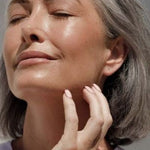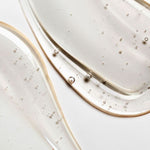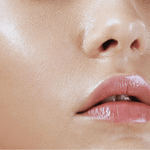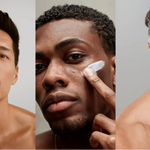EB5 BLOG
Clean in 2017: Part Two, Clean Skin

A conversation with my good friend, Heidi, caused me to think once again about my resolution to be Clean in 2017. Heidi told me, “I don’t like to cleanse my face because my mom told me it would age me.” How could this be true? I realized that this is a myth I have heard before. As you might imagine, skincare and health are issues eb5 cares deeply about. I decided to embark on a mission of determining the benefits of keeping one's face clean.

The first thing I did was pick up my cleanser, flip it over and read the ingredients. Our entire skincare line, eb5, is named for “ingredients that are best for skin” so what does that mean, exactly?
A quick search on webMD confirms what most of us already know about vitamin E. This amazing ingredient is not only easily absorbed by the skin, but it protects and repairs skin damage from free radicals with its antioxidant qualities. To understand the benefits of an antioxidant, one needs to understand why our skin needs protection from oxidants (free radicals.) Free radicals are molecules that ravage collagen, and cause fine lines, wrinkles and dryness. Antioxidants help clear the skin of these negative oxidant effects.
Panthenol - better known as Vitamin b5 - is also one of the best ingredients for skincare. The Naked Chemist explains that vitamin b5 is easily absorbed deep into the skin. Because it infuses water in the cells, panthenol is immediately hydrating. Also, if it is used consistently, it takes on an anti-inflammatory role.
Oat kernel protein is recognized by the US Food and Drug Administration as a skin protectant and reliever of a variety of dermatoses (diseases affecting the skin). The protective properties associated with colloidal oatmeal is incredibly soothing and moisturizing as well as being an effective anti-inflammatory and anti-itch agent.
One thing I immediately noticed about our cleanser when I began using it was: no lather. Turns out this is because eb5 cleanser uses glycerin and alpha hydroxy acid (AHA) to clean, not soap. Glycerin is thick and sticky, and it because it easily mixes with oil, it smoothly removes the dirt and dead skin cells that stick to it. Alpha hydroxy acids are natural acids and found in such things as citrus fruits (citric acid), sugar cane (glycolic acid) and sour milk (lactic acid). The outermost layer of the skin is the epidermis, and it’s this thin layer that AHA will affect. Because it penetrates the skin so easily lactic acid is commonly used to exfoliate dead skin cells from the epidermis. Skin cells turn grey once they die, so you'll notice your skin is much brighter once this grey layer is sloughed off through exfoliation.
Unlike Heidi, I am not opposed to cleansing my face. I just get lazy sometimes and choose to skip my skincare regime for an extra 5 minute snooze in the morning. But Dr. Jeannette Graf, assistant clinical professor of dermatology at The Mount Sinai Medical Center, advises the following: “You should wash your face twice a day. Once in the morning when you wake up to remove the dirt and bacteria that gathers on your face while you’re sleeping, then again at night to take off makeup and the grime collected throughout the day.” I've decided that I need to let Heidi know, if she’s using the right cleanser, her skin will not only reap immediate benefits from being cleaned daily, but it will actually aid in the anti-aging process.







